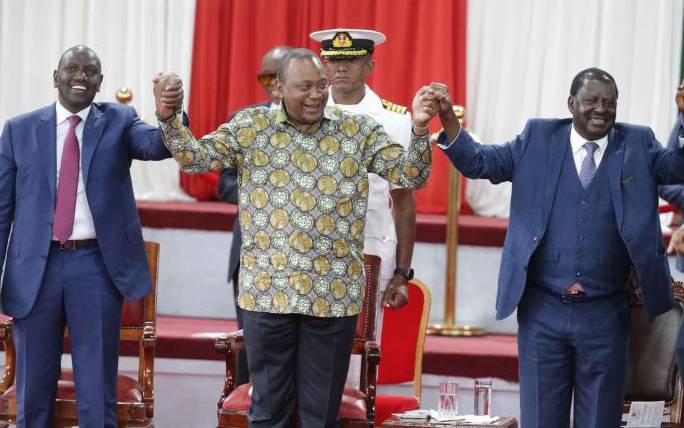×
The Standard e-Paper
Join Thousands Daily

President Uhuru Kenyatta (centre) his deputy William Ruto (left) and former Prime Minister Raila Odinga during the launch of the Building Bridges Initiative report at Bomas of Kenya in Nairobi on November 27, 2019.[Stafford Ondego, Standard]
On March 9, 2018, President Uhuru Kenyatta and the leader of the main opposition, Raila Odinga, surprised their supporters when they publicly shook hands and agreed to work together.